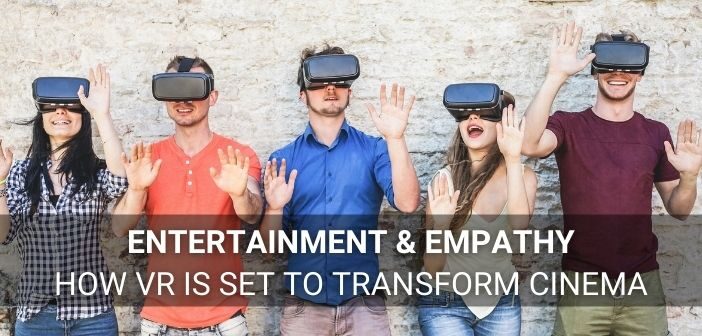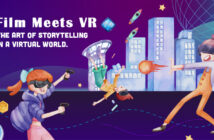With the invention of the video camera, an entire industry has been created around the trade of telling stories. Visualized on a screen and recorded for posterity, movies remain one of the most far-reaching and engaging channels for cultivating an audience. With the advent of VR, the medium of movies is set to experience a paradigm shift, propelled by the increasing availability and affordability of Virtual Reality software and headsets across the world.
Image Courtesy: Brilliant Eye from Adobe Stock
For cinematographers, being able to modulate sensory input for viewers is of paramount importance. In order to portray immersive and empathy-inducing experiences, cinema halls have been perfected over the last century as the ideal place to catch a movie. Even then, the best cinema hall in the world cannot compete with a VR headset. Given their ability to isolate viewers’ senses, headsets provide seamless (and screen-less) visuals. Combined with spatial audio, the immersive experience provided by VR is unparalleled.
The technological edge of VR lends itself best to two disparate movie genres – horror, and documentaries. Here’s how:
VR in Horror
Since Alfred Hitchcock elevated the genre to the limelight, horror movies have been an important part of pop culture. Yet, despite a marked improvement in graphics and cinematic tech, horror movies are not as fear-inducing as they used to be – especially since audiences have grown wise to repetitive plotlines and jump scares.
With VR, horror can be reimagined entirely. When viewers see a story unfold around them through a 360-degree interface, the veil of separation becomes virtually non-existent. Isolated by the headset, the viewers of a horror flick will be truly transported within the story’s setting. The reactions generated in this setting will not simply be sympathetic to the protagonist, but a real reaction to the horror atmosphere.

Image Courtesy: aijiro from Adobe Stock
The internationally acclaimed ‘The Ring’ franchise has taken the lead in this direction, with the launch of “The Ring VR”. Shot from the PoV of the antagonist, the film provides a promising glimpse into how the genre is set to change and adapt with new technology.
VR in Documentaries
While horror deals with the realm of nightmares, documentaries delve into the details of our world as it exists. Commemorative and educational in nature, documentaries are considered dull and slow by most viewers – to the point of being considered “cinematic lectures”.
Yet, the genre plays the critical role of spreading awareness and starting conversations on a host of topics – cultural, political, and economic. Given the surge in VR usage in recent years, documentary makers across the world have started exploring the genre through the lens of a headset.
With the newfound ability to make the viewer the protagonist, the avenues available to tell stories have multiplied manifold. Culturally significant narratives – such as Anne Frank’s experience of living in the Secret Annex during WW 2 – are being rejuvenated with the help of VR, where a viewer can walk and interact with the living space she shared with her family.

Image Courtesy: hiv360 from Adobe Stock
Using the same principle, viewers can be transported back in time in order to experience narratives attached to their geography. A viewer can explore the ruins of Pompeii, the Roman city wrecked by volcanic debris, as a pedestrian amongst the preserved structures. Using VR, viewers can also witness first-hand the effects of climate change on coral reefs, an experience that most people cannot access in-person.
As the viability and fidelity of VR tech rises, the entertainment industry is set to keep pace with each development. The foundation of this increasingly immersive and interactive storytelling is empathy; with the advent of narratives we live through and not merely witness, the new age of cinematic experiences has begun.



